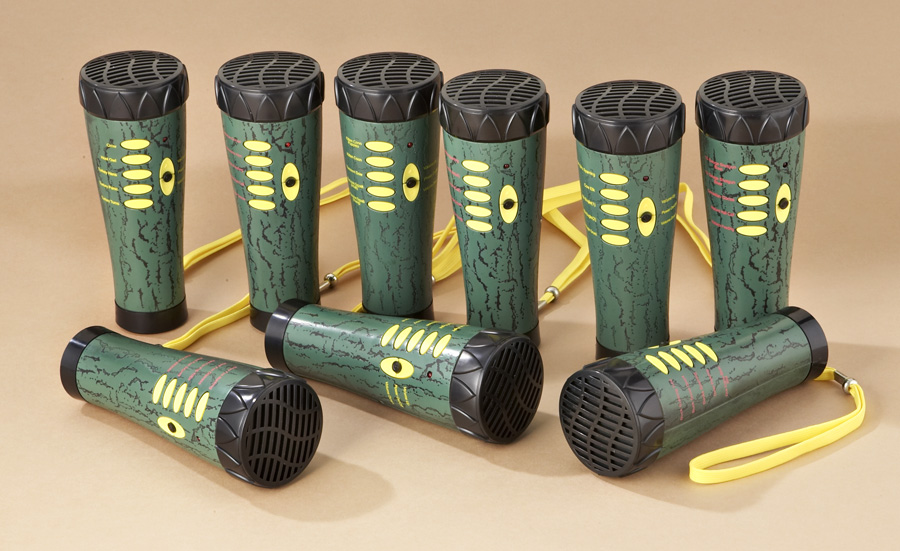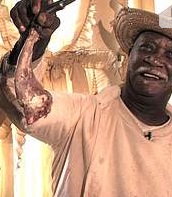Sparky: Let's take a rest from guns -
Hidden planet discovered in old Hubble data
New strategy may allow researchers to uncover other distant alien worlds
 NASA, ESA, and G. Bacon (STScI) This is an artistic illustration of the giant planet HR 8799b. The planet was first discovered in 2007 at the Gemini North observatory. |
|
Space.com |
 |
A new technique has uncovered an extrasolar planet hidden in Hubble Space Telescope images taken 11 years ago.
The new strategy may allow researchers to uncover other distant alien worlds potentially lurking in over a decade's worth of Hubble archival data.
The method was used to find an exoplanet that went undetected in Hubble images taken in 1998 with its Near Infrared Camera and Multi-Object Spectrometer. Astronomers knew of the planet's existence from images taken with the Keck and Gemini North telescopes in 2007 and 2008, long after Hubble snapped its first picture of the system.
Slideshow |
The planet is estimated to be at least seven times the mass of Jupiter. It is the outermost of three massive planets known to orbit the dusty young star HR 8799, which is 130 light-years away from Earth. NICMOS could not see the other two planets because its coronagraphic spot — a device that blots out the glare of the star — blocked its viewof the two inner planets.
"We've shown that NICMOS is more powerful than previously thought for imaging planets," said the scientist who found the planet, David Lafreniere of the University of Toronto in Canada. "Our new image-processing technique efficiently subtracts the glare from a star that spills over the coronagraph's edge, allowing us to see planets that are one-tenth the brightness of what could be detected before with Hubble."
Taking the image of an exoplanet is not an easy task. Planets can be billions of times fainter than the star around which they orbit and are typically located at separations smaller than 1/2,000th the apparent size of the full moon, as seen from Earth, from their star. The planet recovered in the NICMOS data is about 100,000 times fainter than the star when viewed in the near-infrared spectrum.
Over the last two decades, scientists have spotted more than 300 extrasolar planets circling other stars in our Milky Way galaxy.
Lafreniere adapted an image reconstruction technique that was first developed for ground-based observatories.
Using the new technique, he recovered the planet in NICMOS observations taken 10 years before the Keck/Gemini discovery. The Hubble picture not only provides important confirmation of the planet's existence, it provides a longer baseline for demonstrating that the object is in an orbit about the star.
 |
NASA / ESA / STScI / Univ. of Toronto This image shows the spot identified as a planet and tracks its movement. The star it orbits has been blotted out by Hubble's coronagraph mask. |
Hubble is due to be serviced by a NASA shuttle crew in May for the fifth and final time. The shuttle Atlantis was rolled out for the mission on Tuesday and is due to launch May 12.
NICMOS's view provided new insights into the physical characteristics of the planet, too. This was possible because NICMOS works at near-infrared wavelengths that are severely blocked by Earth's atmosphere due to absorption by water vapor.
"The planet seems to be only partially cloud covered and we could be detecting the absorption of water vapor in the atmosphere," said team member Travis Barman of Lowell Observatory in Flagstaff, Ariz. "Measuring the water absorption properties will tell us a great deal about the temperatures and pressures in the atmospheres, in addition to the cloud coverage."
|
"During the past 10 years Hubble has been used to look at over 200 stars with coronagraphy, looking for planets and disks. We plan to go back and look at all of those archived images and see if anything can be detected that has gone undetected until now," said Christian Marois of the Herzberg Institute of Astrophysics, Victoria, Canada.
If the team sees a companion object to a star in more than one NICMOS picture, and it appears to have moved along an orbit, follow-up observations will be made with ground-based telescopes. If researchers see something once but its brightness and separation from the star would be reasonable for a planet, they will also do follow-up observations with ground-based telescopes.
NASA's recently-launched Kepler mission will also be hunting for extrasolar planets in our home galaxy, though it will be looking for ones that are Earth-sized.








 Here is the actual story -
Here is the actual story - 



